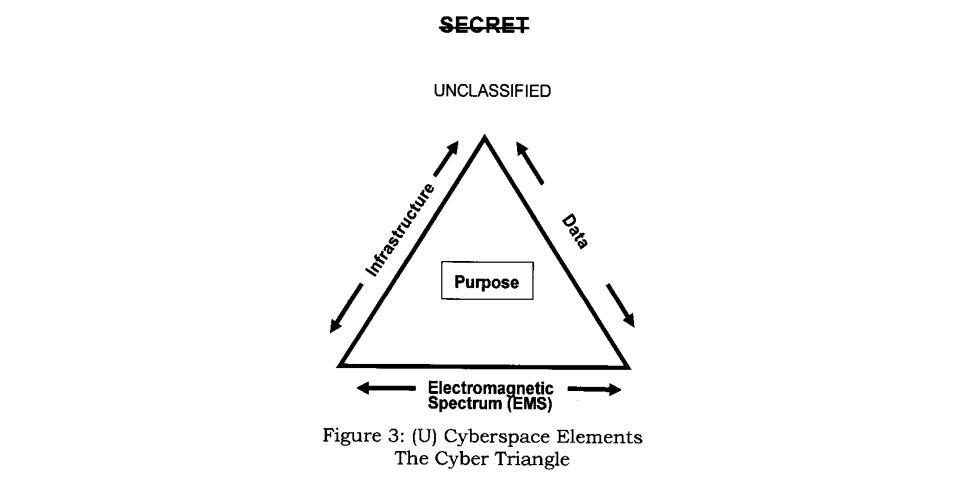New to the Cyber Vault

NSArchive FOIA request
This document provides cyberspace strategy for Strategic Command. It provides a framework for the execution of tasks to generate effects in cyberspace in support of DoD objectives and within pre-planned authorities.
Related Documents from the Cyber Vault Library
The body of this study consists of four parts - background (which includes discussions of cyber weapons, targets, as well as actors and attribution), a brief examination of the Cyber Command, a section on authorities (legislative, executive branch, and international), and an exploration of issues for Congress.
This message notifies recipients that the U.S. Strategic Command has established a subordinate command, the U.S. Cyber Command, with initial operational capability as of May 21, 2010. It also specifies the mission of the new command, its responsibilities, organization, and command relationships.
This memo from the head of the U.S. Strategic Command, the parent command of the U.S. Cyber Command, recommends that the latter, established that May (Document 6), be declared fully operational. It also summarizes the Cyber Command's six key missions, including one that is partially classified.
This formerly restricted publication discusses cyberspace (including national intelligence) operations; authorities, roles, and responsibilities (including legal considerations); and planning and coordination (including inter-organizational and multinational considerations).
This vision document identifies key objectives for the U.S. Cyber Command (including integrating cyberspace operations in support of joint force operations), and identifies the "enablers" that are expected to allow achievement of those objectives.
Department of Defense, The DOD Cyber Strategy, April 17, 2015. Unclassified.
The two main components of this strategy document are the identification of five strategic goals (including establishing forces and capabilities to conduct cyberspace operations and the ability to defend against disruptive or destructive cyber attacks) and the implementation objectives associated with the strategic goals.
This document outlines the cyber mission to counter ISIL. See also: USCYBERCOM to CDRUSACYBER
The unit established by this order, the subject of an article in the Washington Post, was assigned the mission of developing malware and other cyber-tools in order to escalate operations to damage and destroy ISIS networks, computers, and mobile phones.
This hearing document contains the prepared statement and testimony of the commander of the U.S. Cyber Command as well as responses to questions asked during and after the hearing.
In this testimony, delivered in a closed hearing, USCYBERCOM's Brigadier General O'Brien explains the most concerning threats to US cyber and explains the role of her specific command, the Intelligence Directorate, in supporting USCYBERCOM operations.
In his testimony, the commander of the U.S. Cyber Command (and director of the National Security Agency) covers the cyber threat environment, the Cyber Command in operation, and conclusions.

